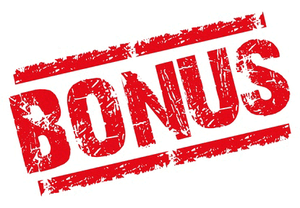White-Label Discount Programs: 7 Tricks They Use to Trick You
We’ve written previously about the underlying science behind why discounts are such a powerful member/customer engagement tool. Aside from the rush of endorphins that comes from getting a good deal, evolutionary science tells us that our brains are hard-wired to conserve our resources and avoid inefficiencies. That’s why saving money is a universal desire.
So it’s no coincidence that virtually every retailer, airline, supermarket and restaurant offers a discount or rewards program. Most membership organizations understand the potential impact of offering a discount program as part of their membership perks because of how such programs drive member retention (among other favorable behaviors.)
With the increasing popularity of using discounts as rewards and incentives, it’s not surprising that more and more discount programs have sprung up, trying to sell their white-label discount network (also called a private-label discount network) to member associations, trade organizations and other membership-based groups.
But not all discount networks work the same. And not all can drive member retention and boost acquisition rates.
If your organization is considering a white-label discount program to help you connect, attract and engage your members, good for you. It’s a wise decision, as proven by the many organizations that have discovered growth through offering discount programs.
Once you’ve decided to offer a discount program, what criteria should you use to find the best one suited for your organization? As the competition for your attention intensifies, so too will the intensity of the competing voices who are trying to win your business.
As a result, be prepared to encounter some rather creative methods with how discount networks compare themselves to their competitors. Here are some of the tricks some companies use to trick you, and how they spin their message to get you to sign on the dotted line.
In-Store Discounts Matter Most
 The secret to a powerful discount network lies in its relevance to your members. For a discount offer to be compelling enough to attract and engage your members, it must be within proximity to where your members live or work. The fact is, in-store offers are critical to the success of any discount network. The more physical locations near to where your members live and work, the more opportunities they’ll have to engage with your program.
The secret to a powerful discount network lies in its relevance to your members. For a discount offer to be compelling enough to attract and engage your members, it must be within proximity to where your members live or work. The fact is, in-store offers are critical to the success of any discount network. The more physical locations near to where your members live and work, the more opportunities they’ll have to engage with your program.
According to the U.S. Census Bureau’s Quarterly Retail Report, roughly 90% of all U.S. retail sales occur at brick and mortar stores, while just 10% is spent at an e-commerce (online) merchant. If your discount program has only online merchants, then your member benefits will be irrelevant for 90% of your members’ overall purchases. Such programs simply can’t deliver the levels of engagement you need to be successful.
The inconvenient truth is, few discount companies are willing to work directly with in-store merchants. It’s expensive and requires manual effort to contact, manage and negotiate each offer. It’s much easier for them to plug into an affiliate network and feature online-only merchants because the whole process can be automated.
Not surprisingly, most discount programs don’t have in-store locations. Not only because automation makes it cheap and easy to start an online discount business, but because they can also monetize each online transaction to fund their company.
Consequently, when it comes to describing the size of their discount network of participating in-store merchants, some discount companies use tricks to make it appear as though they have done the hard work of creating an in-store discount network. Their obfuscation makes it hard for you to make an educated, apples-to-apples comparison between competing discount programs.
When Size Matters
Now that you know to look for a discount network with the most in-store locations, you’ll need to understand that many membership discount programs use tricks to downplay their lack of in-store, brick-and-mortar locations. Be on the lookout for the following marketing tricks used to inflate the breadth and depth of their discount program:
1. Counting Offers Instead of Locations
One of the most common marketing tricks is to count the number of discount offers instead of the number of actual brick-and-mortar locations. Knowing the number of locations is a better way to determine if the network can serve your members wherever they live nationwide.
Let's say your merchant network claims to have 1,000 "offers" or "ways to save." But then you find they have one location in rural Wyoming that has 1,000 discount offers from their single location, and another merchant in the heart of NYC that has one discount offer. Would you be impressed if they had just two locations? Of course not. By counting offers, it’s easy to manipulate you into thinking their network is far more substantial than it truly is.
2. Creative Math
When a program has online-only discounts, they’ll use a merchant’s in-store locations in their merchant counts. So, if they have an online-only discount at Target.com, they’ll count all 1,844 target stores in their location totals. Some will even add these locations and the hundreds of online discount offers together, calling them “opportunities to save” or “ways to save.” This tells you nothing about how many places your members can find a discount. A merchant location should be just that: a single physical location with one (or more) discounts on a product or service.
3. Multiple Counting of the Same Location
Some programs count the same discount offer multiple times simply by manipulating the expiration date. For example, they will list the same product/service for an entire year, but expire an offer each month. In this way the program will count 12 offers for the same product and/or service. This practice underscores the reason to compare physical locations rather than the number of “discounts” or “offers.”
4. Counting Redemption Type
Another technique is to count each type of redemption method as a unique offer. For example, a mobile coupon, an in-store coupon and an online-redeemed discount are counted as three distinct offers, when in fact the discount and product are all the same.
5. Counting Cities Instead of Locations
 Be on the lookout for those networks that use municipalities as their only measurement for the size of their network. They’ll say, we have “A gazillion offers in 5,000 cities.” but this too is deceptive because it doesn’t really reveal the distribution of discounts at physical locations near where your members live and work.
Be on the lookout for those networks that use municipalities as their only measurement for the size of their network. They’ll say, we have “A gazillion offers in 5,000 cities.” but this too is deceptive because it doesn’t really reveal the distribution of discounts at physical locations near where your members live and work.
The most recent U.S. Census of Governments reports 19,522 municipalities in the United States, so a network claiming “discounts in 5,000 cities” is only serving roughly a quarter of the country. With this method of counting, you won’t know which quarter they serve.
Another trick used to inflate the size of their merchant network is to imply their online-only discounts are like “having a discount” in every municipality in the country. Again, this is why it’s important to look for savings networks that count in-store locations, and not the number of discounts.
6. Location Inflation
Some providers inflate their numbers by using grocery/convenience stores and pharmacies in their location counts. Why is this a problem? Because many grocery coupons are free and forgettable, and it's a big reason why their usage has declined since 2011. And the same goes for pharmacies. Roughly 99% of all pharmacies participate in a free, public-facing discount program that offers little value to your members. But many discount programs are eager to count these types of merchants to inflate their numbers and confuse you. For your reference, there are 40,000 grocery stores, 155,000 convenience stores, and over 67,000 pharmacies in America. Ask the provider if they include these types of stores in their location counts. If they do, you’ll know they consider these ubiquitous grocery and pharmacy coupons the best value they can muster. But it also shows the lengths they’ll go to make their discount network appear more significant.
7. Clients Instead of Locations
When the number of physical locations is not convenient to report, some discount networks will simply cite how many clients they have. This says nothing about how many ways your members can save. And because most of these “clients” were given the program for free, their participation does not reflect the levels of engagement they achieve with their members/customers. And isn’t member engagement what it’s all about?
More Helpful Resources
A white-labeled discount program can have a significant impact on your organization’s ability to attract and engage your members, customers or constituents, but you must be careful in how you select that program. To help you identify the best discount program for your organization, or to learn how to build your own discount network, check out this free eBook: The Ultimate Guide to Discount Programs.
Bonus: To see how other organizations have used a discount program to solve specific challenges, here are a few case studies:
- Member Acquisition: Member organization boosts member acquisition
- Member Retention: Member organization drives increased member retention
- Member Engagement & Acquisition: Farm Bureau Federation boosts lagging engagement and acquisition
- Member Retention: Organization retains 80% of members by adding a discount program to member benefits
Topics: Customer Engagement, Member Benefits, discount program, member acquisition, member engagement, member engagement strategies
Written by: Gary Toyn















Share your Comment.